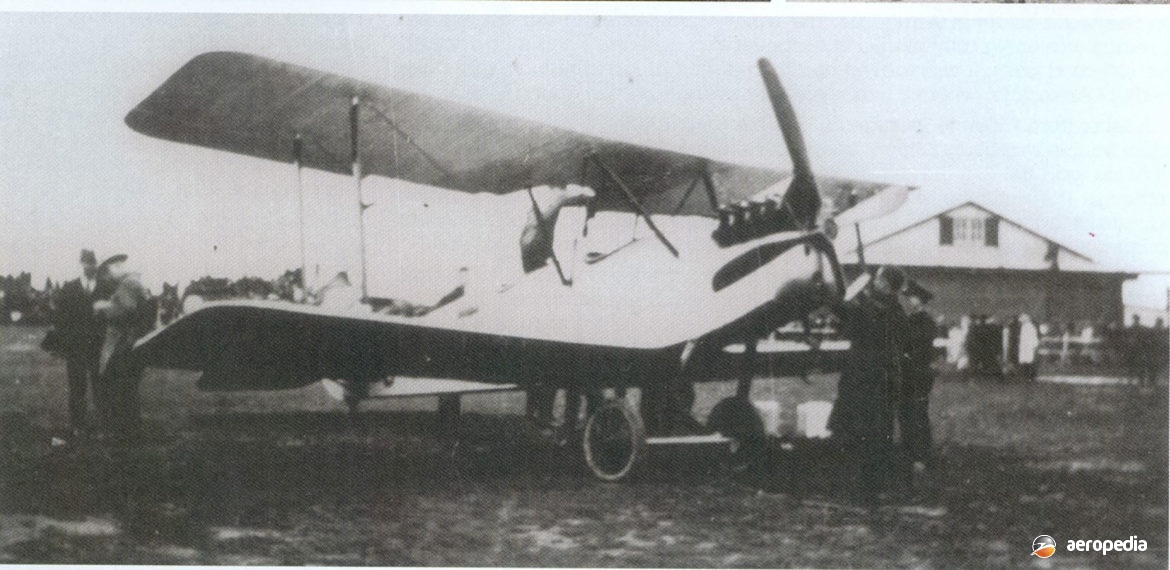Photograph:
The Mackenzie Silver Wings shortly after completion (Author’s collection)
Country of origin:
Australia
Description:
Two-seat light biplane
Power Plant:
One 52 kw (70 hp) Renault eight-cylinder VEE liquid-cooled engine
Specifications:
- Wingspan: 8.1 m (26 ft 6 in)
- Length: 6.94 m (22 ft 8 in)
- Max speed: 113 km/h (70 mph)
- Cruising speed: 97 km/h (60 mph)
- Empty weight: 680 kg (1,500 lb)
History:
On 28 June 1896 Mr Gotthilf [George] Mackenzie Jnr was born at Woorak, VIC. From a young age was interested in aviation and built model aircraft. In 1917 he joined the Australian Flying Corps, commencing duties as a rigger at Point Cook, VIC. On his father’s farm in 1918 he commenced the construction of a light biplane aircraft of his own design similar in appearance to the RAF SE.5. No formal drawings or stress calculations were carried out. Silver spruce timber was ordered from Canada and, as it took some months to arrive, some drawings were prepared. The fuselage was wire braced and covered with American cottonwood ply. The tail unit and wings were solid spruce beams. In the construction Mr Mackenzie built the machine without using normal aviation type materials, using ordinary wire for bracing in lieu of aircraft grade. A type of Frise aileron was fitted and the control horns were multiple layers of ply.
The lower cowling of the engine was built from cottonwood ply with an internal metal lining to prevent oil damage, the upper part of the cowling being of metal and having a cooling scoop for the 52 kw (70 hp) Renault V-8 engine. This engine was one of three built by Melbourne firm Kelly & Lewis in 1916 and had been built for Graham Carey, who at that time was operating the Ballarat Flying School, at one stage having a fleet of Farman Shorthorns. A four-blade propeller of Queensland maple was constructed. All metal fittings were of wrought iron and were prepared by a Mr Fisher who operated as the blacksmith in the village of Rainbow, VIC.
The aircraft seated two in tandem and control was from the front cockpit. The two fuel tanks were cylindrical and were attached to the sides of the aircraft. The authorities were advised in April 1921 the aircraft was close to completion and authority was sought to commence trials. Test pilot was initially to be Lt W H Treloar AFC who at that stage was carrying out joyriding duties in Victoria in a de Havilland DH.6.
Captain Frank Follett of the Civil Aviation Board visited the construction site at Pella on 13 April 1921 and later informed Mr Mackenzie a Certificate of Airworthiness could not be granted as there had been no inspections carried out during construction and no material testing had been carried out.
In any event, the aeroplane was completed and the designer/builder commenced taxiing trials on 12 October 1921, making a number of hops. Arrangements had by this stage been made for Mr R G Carey to perform flight tests, and attempts were made on that day to fly. Captain Whittingham of the British Imperial Oil Co also sought an opportunity from Mr Mackenzie and attempted to fly the aircraft, taking off downwind and getting into the air but, whilst turning, crashed from about 6 metres (20 ft), breaking the propeller and doing minor structural damage. It was later ascertained CaptainWhittingham was not a licenced pilot and this caused problems with the Controller of Civil Aviation.
After repairs, on 26 April 1922 a short flight was made with the rebuilt aeroplane, the pilot on this occasion being Mr P J Pratt, with Mr Mackenzie as passenger. A further two flights were made that day; and further flights were made later. The Department considered these flights to be experimental and required supervised flight testing. A letter in the Department’s file states the aircraft “flew hands off…with engine on and gliding with engine off…controls answered ?? well and landed early”. Records show that shortly after 6 May 1926 registration markings were to be allocated but this did not occur.

